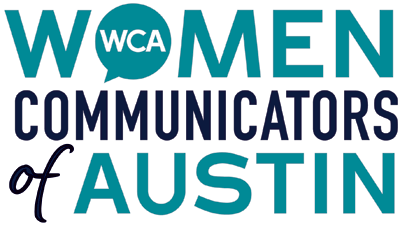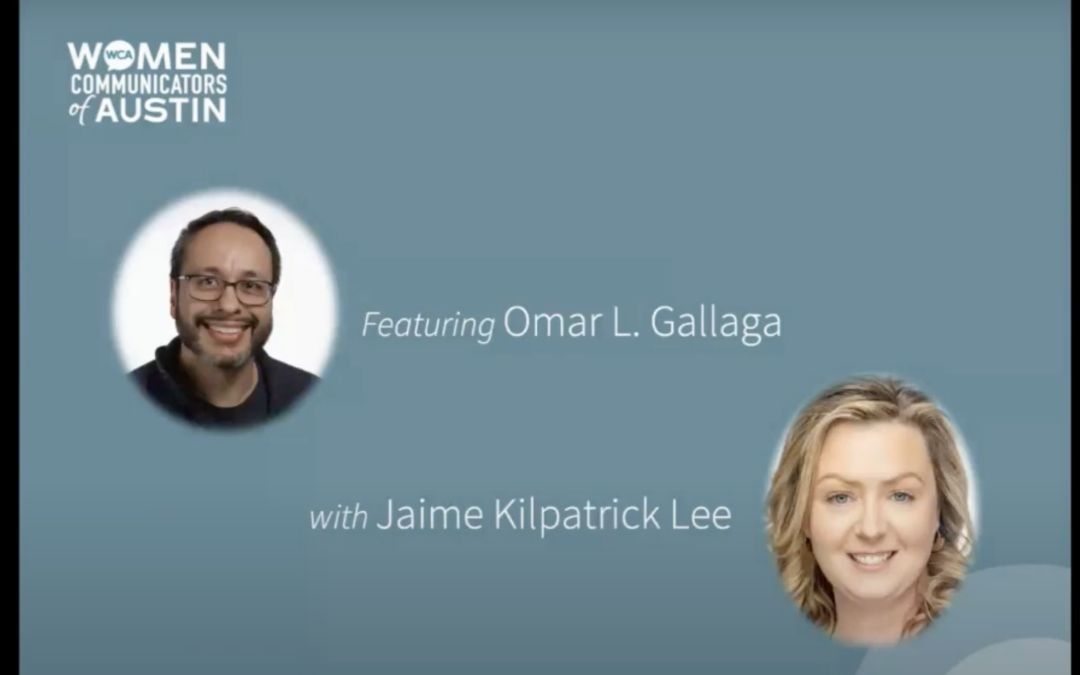Comms Squad Webinars Episode Four
WCA believes that a diverse, inclusive, and equitable environment where all our members can grow, thrive, and lead as communications professionals benefits us all.
Along with many other charitable nonprofits, we have been on a path of exploration to identify how to build the core values of diversity, equity, and inclusion (DE&I) into all our operations.
In 2020, the WCA Board created the DE&I Task Force to develop recommendations for a sustainable culture of diversity and inclusion that reaches all parts of the organization. One way the Task Force identified to address the issue was to dedicate one of our webinar episodes to the topic – not only to show our dedication to DE&I, but to also share best practices for nonprofits who might be faced with similar explorations for their organizations.
Women Communicators of Austin (WCA) launched its free CommSquad webinar series to help resource-strapped organizations take the first steps toward tackling their communications challenges. The webinars provide education and advice that nonprofits and small communications organizations can use in developing their communications plans. In each episode of our webinar series, we talk with communications and marketing experts about how to tackle the most challenging aspects of building and implementing an effective communications plan.
Our webinar episode, “Developing a DEI Plan for Nonprofits,” features Omar L. Gallaga, a technology culture reporter who has written for (among others) NPR, CNN, The Washington Post, The Wall Street Journal, Rolling Stone, Wired, Texas Monthly, and the Austin American-Statesman, where he was a longtime reporter, editor, and podcaster. He continues to write about the technology culture industry, while also providing journalism mentorship and training work for The Poynter Institute.
In this WCA webinar episode, he brings his wealth of experience and knowledge around DE&I to bear in his recommendations and discussion with moderator Jamie Lee, WCA Philanthropy Committee member and Senior Communications Manager for the American Heart Association.
Here are a few pointers, questions to consider, and resources that offer inspiration and guidance on how you can integrate DE&I values throughout the operations and activities of your nonprofit. [Watch the entire episode for the full discussion and more details.]
What is Diversity?
Diversity goes beyond race and gender. There are often intersectionalities in the areas of housing security issues, military service experiences, body types, vulnerable populations, immigrants, people dealing with chronic disease, and so much more.
Have the Conversation
The first step for any organization is to have an internal discussion around the DE&I issues that affect your group and how you will address DE&I both internally and externally. Until you have the discussion, you can’t come to a consensus on things. Determine how your organization wants to address messaging.
Establish a Style Guide
The first step after having the conversation is creating an internal style guide specific to your nonprofit. Don’t make up things as you go along, even if it’s worked in the past. Omar’s advice: create a style guide for consistency, and note differences from AP Style. The AP Style Guide is the baseline; if you’re pitching to journalists, that’s their language. Then say, “here’s what we DON’T use.” When in doubt, ask! Make it a habit to confirm with the sources directly on how they prefer to be identified.
Put it into Action
Ensure your audiences feel seen and heard in your sources, images, language, etc. Use alt tags for images; make sure everything is accessible for vision and/or hearing-impaired audiences.
Use diverse sources for storytelling. Tap into organizations that make diverse sources available. (Resources listed at the end.) Narratives are more powerful than data — especially for TV news. Use a combination of storytelling and data.
Make sure to include diverse outlets in your media list; consider pitching to media outlets with specialized audiences (by language, demographics, etc.) if that’s appropriate for your organization. Newsletters, podcasts, and individuals who have a large audience on Substack are alternative outlets. Ask around and dig deeper than just doing a Google search; really strong writers move away from freelancing, so you’ll need to expand your search. Keep an eye on emerging areas: certain niche podcasts have big audiences, and some are topical. They might be better outlets for your message.
Measuring Success
How do you know if you have been successful in reaching your DEI goals? Keep evaluating your impact and reach. Keep up with changing times and issues, and alter your style guide and methods as needed.
Key Takeaways
- Writing about or shooting video of communities with dignity and authority requires knowing those communities and covering them humanely and with empathy.
- If you are in doubt about issues of diversity or inclusion, HAVE THE CONVERSATION.
- Style norms and language evolve over time; keep up with language usage and update your internal guides and practices accordingly.
- Have an internal style guide; this will improve consistency and keep your organization on the same page.
Tools and resources (all are free; everyone just wants to do the right thing)
- apstylebook.com — AP Style Guide
- diversitystyleguide.com — Terms related to a variety of diverse groups
- consciousstyleguide.com — Website devoted to conscious language
- Poynter.org — Articles and tips on writing and training
- DiverseSources.org — Diverse experts to draw from
- AAJAstudio.org — Diverse sources from the Asian American Journalists Association
- tonl.co — Diverse stock images
- blackillustrations.com — Illustrations of Black people for digital projects
- trustingnews.org/trustkits/ — Break down big trust-building strategies into actionable steps
Watch the full episode to hear more advice from Omar about how DEI impacts nonprofit organizations and their communications efforts. Then come back and check out the other CommSquad webinars.
- Developing a DEI Plan for Nonprofits - February 15, 2024

